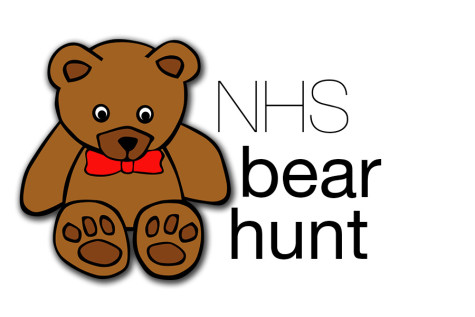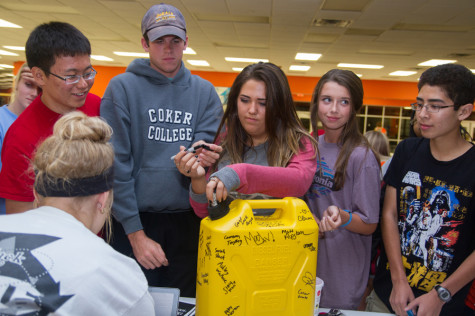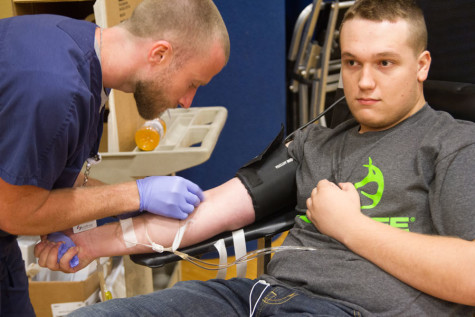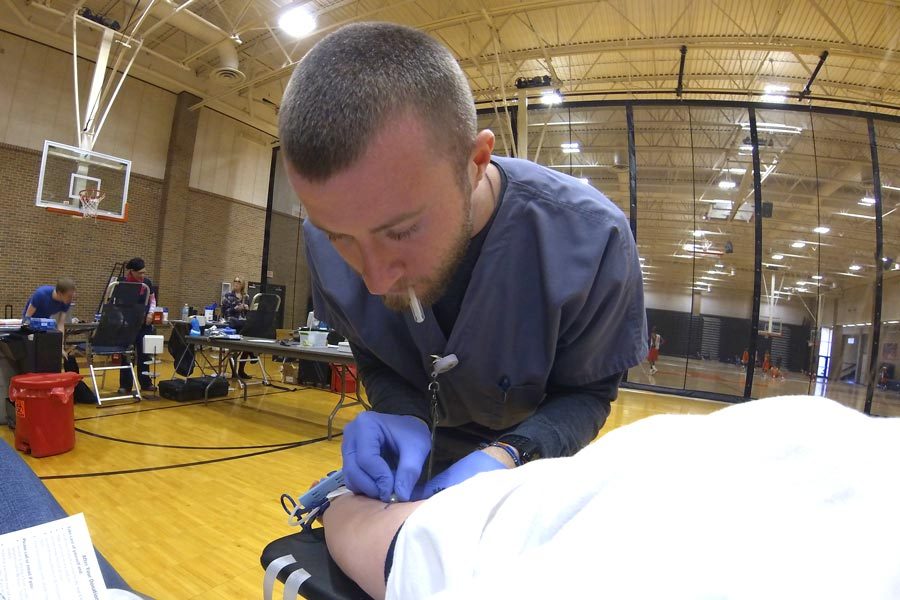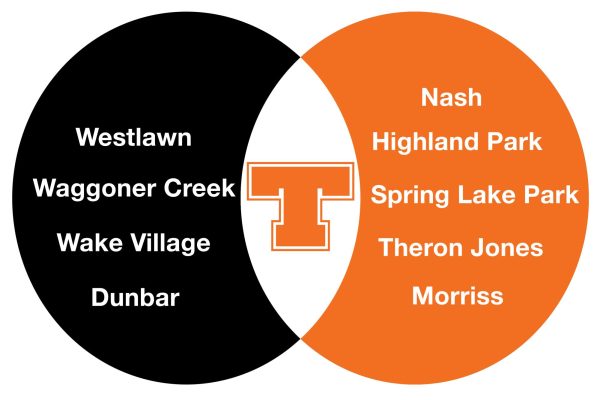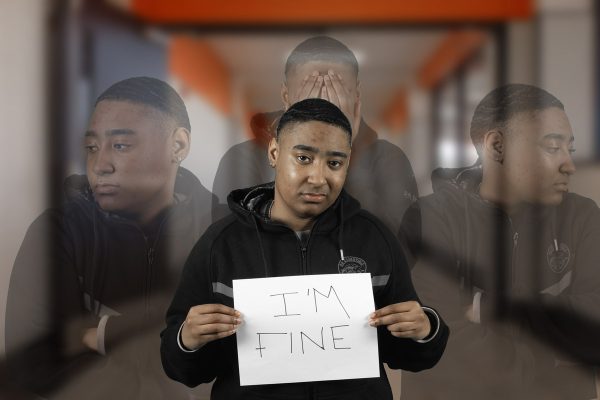The beautiful bloody cause
Junior tells of her shakey experience giving blood at school drive
Senior Katie Johnston watches the United Blood Services technician guid the needle into her arm during the Blood Drive held in the Texas High School Tiger Center.
Every two seconds someone in the United States needs a blood transfusion. Every few months, Texas High hosts a Lifeshare blood drive. Approximately 38 percent of the population is capable of donating blood, but only 10 percent do. Donating blood can seem like an intimidating experience at first, but knowing that you helped save someone’s life is truly a gratifying feeling.
Volunteers buzz around reminding people to have their IDs ready and offering bananas to nervous teenagers. From across the room, you might hear nurses asking students to clear the area while they attempt to bring a student back to consciousness. That student was me.
The process of donating blood is fairly simple. They check your blood pressure and iron levels and then you answer a few questions about places you’ve visited out of the U.S. and medicines you take. From there, you wait for a chair to open, they prep your arm and stick a gigantic needle in you. Just kidding. The needle isn’t gigantic and it really doesn’t hurt at all. This is coming from someone who is terrified of needles and shivers at the thought of getting a shot.
A lot of people are concerned with watching their blood come out of their body or watching them stick the needle in. Honestly, if you want to watch, it doesn’t seem real and it’s not as scary as you would imagine, but if you don’t, no one is forcing you to.
When I donated blood, I convinced myself to seem calm about the whole process, but inside I was pretty nervous that there would be something wrong with me and I wouldn’t be able to donate or that I would pass out. So, of course I passed out. Twice.
Everything was going very smoothly, and the nurses were so sweet and answered all of my questions before and while I donated. A few minutes in, I started feeling the effects of the loss of blood. It’s a feeling that can only really be described as a calming mix between floating and the way your hands feel when they’re cold.
When I was about halfway through I began feeling lightheaded. “It’s ok,” I thought, “If I pass out, I’ll come right back and everything will be fine.” The first time I passed out, I seized and “looked possessed.” When I came back, I was surrounded by nurses and volunteers who were shooing other students away and asking me if I was alright. I felt fine and I had no idea why everyone was so concerned until they told me later.
The second time, I went smoothly. I said, “I don’t know what’s happening,” and then I was out for a few minutes. If passing out is a concern of yours, know that it’s much scarier to everyone around you than it is you. I don’t remember anything from passing out, but Trevor Danley does a mean reenactment.
I think that if you’re eligible to donate blood and you’re in good health, you should do it. Even if you hate needles or blood makes you queasy, try it just once. Even if you hate it, you get free snacks, an excuse to miss class and the satisfying feeling of giving.

Naveen Malik is a second year member of the Tiger Times Newspaper and holds the highly sought after position of “Co-Entertainment Editor” along with...



